The Samsung SSD 830 Review
by Anand Lal Shimpi on September 24, 2011 1:02 AM EST- Posted in
- SSDs
- Storage
- Samsung
- pm830
- Samsung SSD 830
AnandTech Storage Bench 2011 - Light Workload
Our new light workload actually has more write operations than read operations. The split is as follows: 372,630 reads and 459,709 writes. The relatively close read/write ratio does better mimic a typical light workload (although even lighter workloads would be far more read centric).
The I/O breakdown is similar to the heavy workload at small IOs, however you'll notice that there are far fewer large IO transfers:
| AnandTech Storage Bench 2011 - Light Workload IO Breakdown | ||||
| IO Size | % of Total | |||
| 4KB | 27% | |||
| 16KB | 8% | |||
| 32KB | 6% | |||
| 64KB | 5% | |||
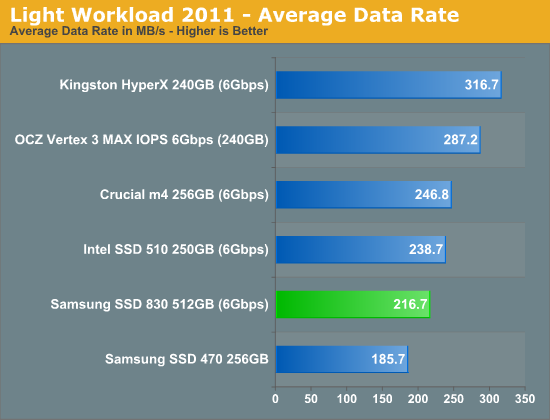
For lighter workloads that involve far less incompressible data, the 830 takes a clear backseat to the SF-2281 based drives. For nearly all users SandForce's real-time compression/dedupe architecture is a significant boon. You simply can't outperform a well designed controller that just writes less than the competition. The SSD 830 is at least significantly faster than the 470 and within striking distance (~10%) of the Intel SSD 510 and Crucial m4.
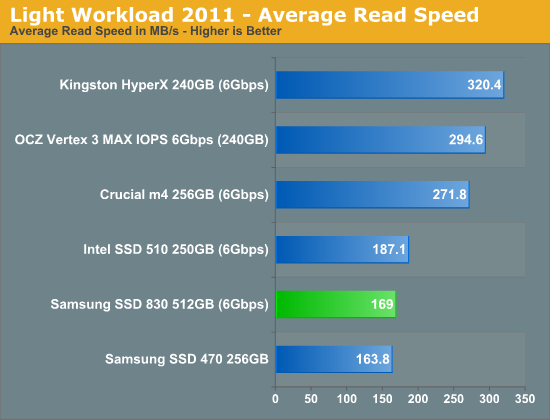
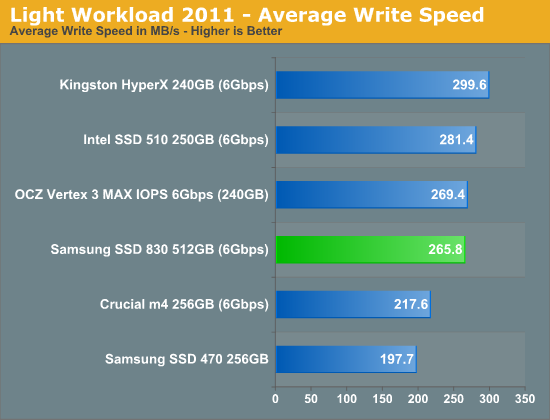

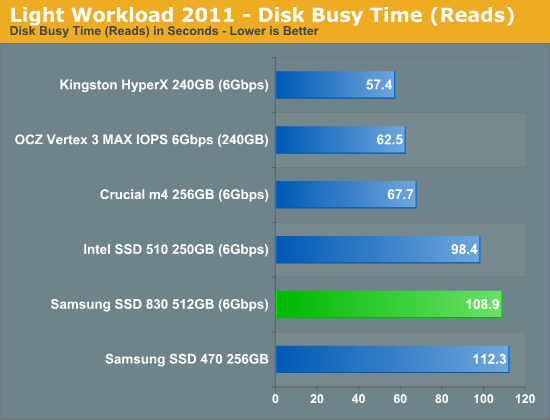
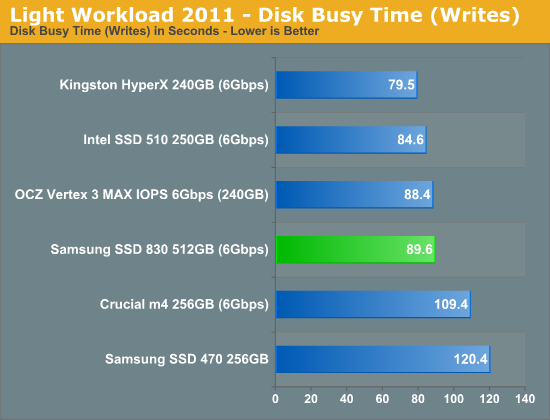










99 Comments
View All Comments
iamezza - Wednesday, September 28, 2011 - link
problem is everyone else has had more problemslanderf - Saturday, September 24, 2011 - link
Speaking of reliability, aren't those the old results on the M4?Anand Lal Shimpi - Saturday, September 24, 2011 - link
Thanks for the heads up, updated :)Take care,
Anand
beginner99 - Saturday, September 24, 2011 - link
...anyone noticed? Though this one would be nice for like a x220 that only takes 7mm drives but with power consumption more than double of a crucial m4 especially at idle...basically kills it for mobile use.MrSpadge - Saturday, September 24, 2011 - link
Yeah, it almost approaches 5400 rpm HDD idle levels..MrS
MrSpadge - Saturday, September 24, 2011 - link
Update: Storagereview.com measured idle power consumption of a 256 GB drive to be just 0.31 W, which is much better and just normal (or even good).MrS
name99 - Saturday, September 24, 2011 - link
Once again, for mobile the issue is not IDLE power use, it is PEAK power. If your system is not specced to handle that peak power, it will crash whenever there is a sequence of back-to-back writes.7Enigma - Monday, September 26, 2011 - link
I think you're misinterpreting his comment. IDLE power matters for laptop users from a battery standpoint. Yes it's going to be a small % difference due to the large(r) draw of the screen, cpu, gpu, etc. but it does add up. We do understand your comment about crashes but I think the OP's comment is in reference to something that is going to ALWAYS be using more power than a competitor as being bad.I do not know what burst power consumption is on mechanical HDD's but would imagine they are at or above what even the most power-hungry SSD consumes. This would be an interesting mini-article Anand!
Obsoleet - Thursday, January 19, 2012 - link
Burst on SSDs tend to use more power than many HDDs.Alexo - Monday, September 26, 2011 - link
So what 7mm SSD would you recommend?